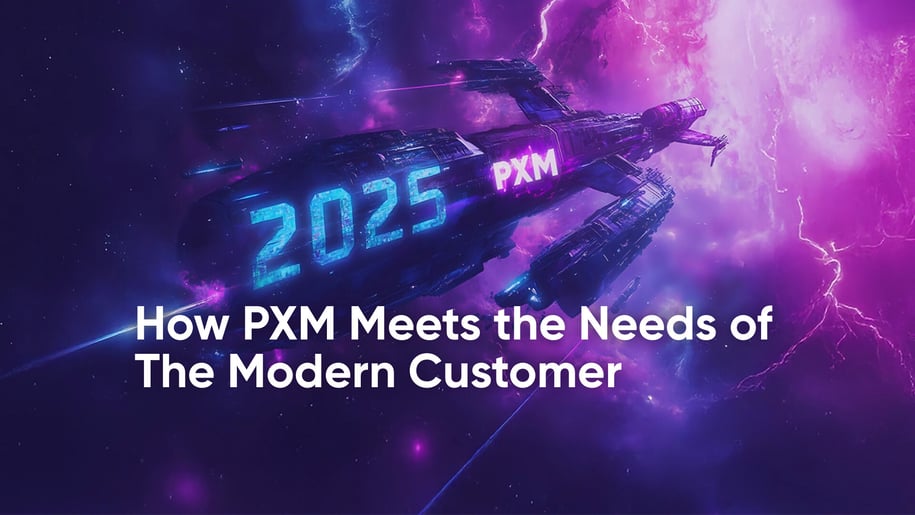
As the digital transformation progresses, the expectations of customers and consumers are also changing: Today's shoppers expect exciting, personalized, and effortless shopping experiences. For companies, this means that if they want to succeed in digital commerce and win over customers in the long term, they need to provide a first-class product and shopping experience.
The transition from PIM to PXM
Many companies have discovered the benefits of product information management (PIM) and data management (DAM) among the many digital management tools. But in the rapidly evolving world of retail, a unique customer experience is no longer just a "nice-to-have" - it's a must. That's why transitioning from traditional Product Information Management (PIM) to modern Product Experience Management (PXM) has already begun. With this change from PIM to PXM, companies are preparing themselves for the future and opening up new sales opportunities. But what exactly is the difference between PXM and PIM?
Gartner's definition of PXM
Some sell PIM solutions with a few superficial extensions, such as PXM. Gartner has a suitable definition for this, which we at Pimcore adhere to in every respect. PXM is a "compatible framework for the optimized creation, delivery, activation, and analysis of product content and data across all channels." In other words, PXM is a suite that has elements of PIM and DAM, and provides additional key features and tools - such as advanced content, analytics, personalization, syndication, and more. This makes it clear: PXM is not just PIM!

What should PXM be able to do?
The retail requirements for PXM are diverse. Here are a few examples:
- Meeting rising customer expectations
- Adaptation to complex multi-channel marketing
- Enabling competitive differentiation
- Using technical innovations
- Adapting to sustainability and regulatory trends
- Promoting sales growth
In short, a real all-rounder needs to meet all these requirements simultaneously.
PXM and its advantages
Sophisticated product experience management (PXM) enables companies to manage their product information centrally, prepare it for specific target groups, and provide the highest possible quality across all channels. Intelligently integrating data and messages creates a consistent brand experience that builds trust and strengthens customer loyalty in the long term. Products become more relevant and attractive, which in turn encourages purchasing decisions.
Also effective internally: PXM
PXM has many advantages even within the company: It simplifies workflows and increases efficiency by reducing redundant work steps. This helps to save time and costs. What's more, PXM, as a holistic solution, makes conventional individual solutions superfluous. Integrating numerous capabilities into a single, compatible framework enables companies to manage the entire product journey - data creation, enrichment, personalization, and syndication - without relying on multiple isolated tools.
Conclusion
PXM is the forward-looking way to replace the conventional PIM system. It improves the findability of products, adapts product content to evolving customer requirements and market trends, and therefore, has the potential to satisfy customers in the long term. For companies, PXM is the key to new growth potential.




.png?width=520&height=294&name=Blog%20Header%20Template%20Nov%202024%20(1).png)